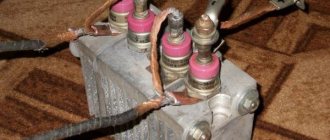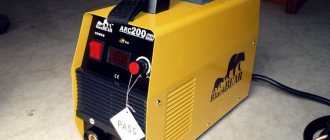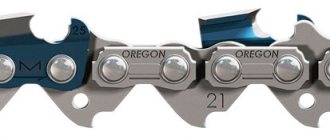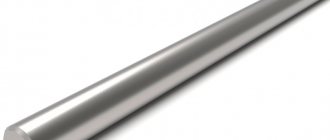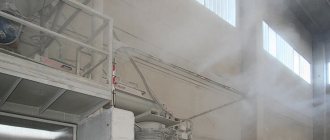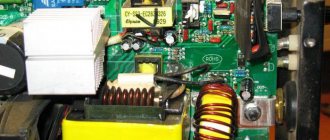Home / Devices
Back
Reading time: 3 min
0
1023
The trend of increasing popularity of affordable machines for inverter welding has been manifesting itself for 10 years. Main buyers: novice craftsmen, summer residents, welding students.
Craftsmen are willing to pay no more than $200 for their welding machine. The conclusion is that budget inverters have quickly and firmly become popular in the sales industry.
This is especially reflected in the reconciliations of stores concentrated on this target audience. Manufacturers promise us a fairly good level of performance for a budget inverter.
The Latvian brand “Resanta” is a leader in sales of inverters, which perform well in everyday life. The number of variations, reliable assembly, and availability of these devices do not leave welders indifferent.
This article focuses on the properties and capabilities of all models of this device for welding work.
- WELDING MACHINE RESANTA SAI-220 Model characteristics
Features of the welding machine Resanta SAI-220
The inverter unit has relatively small dimensions, which makes it easy to use. Thanks to the presence of a special handle, the equipment is easy to carry. The device is sold in a case, which makes it easy to transport and store.
The installation is characterized by the presence of a metal case, which protects the mechanism from various mechanical damage. The case has a paint coating, which limits the possibility of corrosion and negative environmental influences, and also increases the service life of the device.
Design of the welding machine Resanta SAI-220
The figure shows a diagram of the device, which allows you to determine its operating principle.
The diagram shows that the equipment has two fans at once, which ensures complete cooling during operation. The electronic circuits and the GP164 board are characterized by high resistance to overheating, which guarantees long-term operation of the device. The semi-automatic machine has a temperature sensor that turns it off when it overheats. The unit does not turn on until it has completely cooled down.
The device panel contains a current regulator, network and overheat indicators, which allows you to monitor its performance. There is an on/off button on the panel at the back of the device.
Pros and cons of purchasing
Resanta SAI-220, as well as all derivative models of this inverter, are a combination of price and quality.
Low performance and low power, which block the use of the device in the professional field, do not spoil the quality of seams or the ability to hone the skills of students and beginners in welding. Moreover, on the contrary, they make learning and work easier.
Nowadays the Latvians have a lot of competition from manufacturers from China, who position their inverters as more advanced for the same price. What should a welder choose for his work?
The Resanta brand has created a large service structure, a system of real guarantees for the functionality of devices. Of course this is important for such a dangerous industry. All these components will protect you when operating mechanical devices.
As for the inverters themselves, indeed, they do not differ in their work from Chinese ones. Same kit and specifications. Chinese devices, after all, will be a little more budget-friendly, although the purchase is made at your own peril and risk.
Still haven't found the answer? We think that service and warranty should be available, albeit at a slightly steep price. Safety and reliability are paramount.
Specifications
The installation is made using an inverter type. In order to ensure the operation of the equipment, an electrical network is needed to which it is connected. The mains voltage must be at least 220 W. The installation consumes 6.6 kilowatts of power.
The device is used for manual arc welding. The open-circuit voltage is 80 V. A direct current is generated at the output of the equipment, which makes it possible to perform electric arc welding. To do this, the coated electrodes are melted.
The device has a protection class of IP21, which ensures safe operation. The weight of the equipment is 4.9 kilograms. At peak load, the installation consumes a current of 30 amperes.
The equipment has excellent technical characteristics, which allows it to be fully used for welding various metals.
Main types of welding machines
Inverter welding machines are divided into three categories:
- household;
- semi-professional;
- professional.
The noted division is made primarily based on the area and frequency of use of the device. To understand what kind of welding machine you need, you need to determine the conditions of its use.
Household ones are designed for short operating times. It is not possible to use such devices for constant and long-term welding. After only 5-10 minutes of use, the device must be allowed to “rest” for the same, and sometimes longer, period of time.
At the same time, the ability to connect such an inverter to a single-phase household network makes it very convenient for use at home. For quick welding of metal structures in the country or for home work, it is not so critical how many breaks the welding inverter takes.
Semi-professional class inverters are able to operate longer, which is achieved due to the features of their design. Such devices are used in the repair of pipes, the manufacture of frames and metal structures. They are usually powered from a three-phase network.
Professional-grade devices are capable of working without interruption throughout the day. Their welding current can reach 500 amperes. This means that the power consumption of a welding inverter of this type will be the greatest.
All household, some semi-professional and professional devices can be powered from a 220 volt network. At the same time, do not forget that the mains current cannot exceed 160 amperes.
When purchasing an inverter, you must calculate in advance how much power it needs and how much current it will consume.
Connecting a device with higher ratings may lead to the machine turning off or to burnout of the socket contacts, since the equipment is designed for a larger number of kilowatts.
So, what should you pay attention to when choosing a household inverter? First of all, on the welding current, the characteristics of which are indicated by the manufacturer in the passport or manual for the device.
This criterion shows at what current the normal operation of the inverter will be ensured without overload, taking into account the continuous load. Of course, it is better to give preference to devices with a power reserve of 30-50% to the operating current.
Advantages and disadvantages
The SAIPA installation is worth purchasing for home use, as it is characterized by a large number of advantages:
- Thanks to the presence of the Hot Start function, an automatic supply of increased current to the welding arc is provided, which speeds up the process of its ignition.
- The device is characterized by the presence of an automatic shutdown function when overheating, which ensures its long service life.
- The installation has an Anti-stick function, thanks to which the welding current is automatically switched off during the period of welding the tip of the electrodes to the metal.
- The Arc Force function automatically increases the welding current as the arc decreases, so the electrodes do not stick.
Thanks to the presence of all the above functions, the possibility of inverter malfunctions is eliminated and its long service life is ensured.
Despite having many advantages, the installation has certain disadvantages. Reviews from device owners indicate that there is a high percentage of defects. That is why, when purchasing a device, it is recommended to check its functionality. If you work with metal with a thickness of more than 10 millimeters, the efficiency of the device decreases.
Operating principle of the welding machine Resanta SAI-220
The installation has a simple operating principle and is also characterized by ease of use, which makes it possible for even inexperienced craftsmen to use it.
The device boards are located in a metal case, which is characterized by the presence of ventilation holes. The welding machine transforms the variable voltage to obtain a constant voltage - 400 V. After this, modulation and rectification of the constant voltage are carried out. Thanks to pulse width modulation, it is possible to regulate the current.
Power table
When choosing a welding inverter, it is necessary to take into account other factors besides the kW consumed. This is especially true for professional models. They are subject to higher demands than household versions.
It is necessary to take into account the thickness of the materials being welded. The power of the inverter welding machine and the thickness of the electrodes will also depend on this criterion. The required parameters are shown in the table below.
It greatly simplifies the calculation of power consumption depending on operating conditions. In addition, this table will be useful for beginners who often wonder about choosing an electrode of the correct diameter.
| Metal thickness, mm | Welding current, A | Electrode diameter, mm |
| 1,5 | 30-50 | 2 |
| 2 | 45-80 | 2,5 |
| 3 | 90-130 | 3 |
| 4 | 120-160 | 3 |
| 5 | 130-180 | 4 |
| 8 | 140-200 | 4 |
| 10 | 150-220 | 4-5 |
| 15 or more | 160-320 | 4-6 |
The intensity and volume of work is the criterion by which a device with a certain duration of operation is selected. As already described above, this parameter shows how long the device can work with wire of a certain thickness under given conditions.
The operating conditions of the inverter determine its protection class. If the device is to be used indoors, then IP21 certification will be sufficient, but if used outdoors, when the temperature is low or there is high humidity, IP21 protection will be required.
Recommendations for working with the device
The device is used for effective welding of carbon alloys, as well as stainless steel. If there is a need to weld small parts, you can connect the device to a household outlet.
It is not recommended to close the ventilation openings while working with the device, as this will lead to overheating.
To ensure full operation of the device, it is best to properly prepare it for welding. Before turning on the unit, you need to determine that the network switch is in shutdown mode. Grounded wires and an electrical holder are connected to the power connectors. At the next stage, the inverter is connected to the power grid.
Initially, the lowest welding current is set. To start the unit, you need to click on the Network toggle switch. After this, the current is adjusted. After welding, the current is reduced to a minimum. The switch turns off the device, and after that the welding cables and wires are disconnected from the power supply.
Is it worth buying?
The Resanta SAI 220 device and its modifications are a high-quality inverter at an average price. It has modest characteristics, but they are enough for studying or welding a fence in the country. Of course, Chinese manufacturers are ready to offer a dozen inverters at the same price, but with greater functionality. And the question “Chinese noname device or Resanta inverter?” haunts many welders.
In fact, the products of the Resanta brand are the same Chinese inverters, only with a logo in Russian and with a large number of dealers throughout Russia. This is the main difference. By buying a budget Chinese welder from an unknown manufacturer, you get good performance and more functionality. That's all, nothing more. And when purchasing products from large brands like Resanta, you always overpay a little for the brand, but at the same time you get a developed network of service centers throughout the country, an official guarantee and confirmation that the device will not explode right in your hands.
What's better? You decide. We are ready to overpay for a certified device and quality service.
Device malfunctions
If the inverter is used incorrectly, malfunctions may appear in the form of:
- Overheating and failure of the power supply. If this breakdown occurs, you need to contact a service center, especially if the device is under warranty.
- Turn off the fan. It is recommended to stop the operation of the device, otherwise the unit will overheat.
- Long flashing of all indicators during initial startup of the unit.
- Equipment stops after a clicking sound. You can carry out repairs yourself. The adjustable linings and all relays are checked in accordance with the diagram. If one of the ends of the wiring is burnt, this may cause a problem.
- Punching through the mass when turned on. It is recommended to check the wiring, which may be damaged.
- Two indicators blink, the relay activates and the fan turns on. After one second, the unit turns off and the process repeats. To eliminate the problem, the resistance and output transistors are checked.
- Excessively weak material used to make the fan, causing it to break into pieces.
You can fix a large number of inverter malfunctions with your own hands. But, if you need to replace spare parts, then in the absence of appropriate experience and knowledge, it is recommended to seek help from a specialist.
Calculation of device power
Before you begin calculating the power of the device, you need to know the following parameters:
- range of input voltage and welding current;
- welding arc voltage;
- Efficiency of a specific device;
- duration of switching on;
- Power factor.
The welding current interval shows at what network parameters you can work. This is due to the fact that in reality the declared 220 volts are not observed in household electrical networks. Sometimes the voltage can be less than 200 V, and sometimes it can significantly exceed 220 V.
When connecting the welding machine to the mains, a voltage drop of 5-10 percent from the nominal value may be observed.
In this regard, it is advisable to pay attention to models for which the operating range is stated to be from 150-170 to 220-250 volts. It is these devices that are able to provide the best power performance.
The welding current range determines its highest and lowest values. The power of the inverter directly depends on this characteristic. For household models, the minimum values can vary from 10 to 50 A, and the maximum - from 100 to 160 A.
One of the important characteristics of the inverter is the on-time. This parameter actually indicates how high quality a particular device is. The meaning of the criterion comes down to the ratio of work time to “rest”.
For example, if this indicator is 50%, then for every five minutes of operation the device should cool for the same period of time. Thus, the lower this parameter, the longer the breaks will be.
A high percentage, on the contrary, indicates that the device can be used for an extended period of time without interruption.
The power factor of a welding inverter directly depends on the duration of switching on. The calculation to determine this characteristic is determined from the ratio of continuous operation time to total time.
Let's look at everything using a simple example. Let's calculate the power of an inverter welding machine that worked for 4 minutes before the protection tripped. It then needed to cool for two minutes before it was ready to go.
So, to find out what coefficient this device has, you need to divide three by five - the total operating time, and multiply by one hundred. We get the desired value. For household mini versions and semi-professional equipment, the coefficient does not exceed 0.6-0.7.
Let's say there is a device that requires a power supply of 160-220 V, and its maximum current is 160 amperes with an arc voltage of 23 volts. Let the efficiency of such a device be 0.89, and the duty cycle 60%.
The parameters listed above are quite sufficient to calculate power consumption. It is necessary to multiply the current by the arc voltage and divide it all by the efficiency. The result is 4135 watts.
This value shows the power consumed directly during operation. However, as mentioned earlier, it is also necessary to take into account the duration of activation. To do this, you need to multiply 4135 by 0.6. The result is 2481.
This value is the average power. It is considered the most relevant and correct when determining energy consumption.
This approach is closest to reality. After all, it is very rare to encounter a situation where the inverter would work for days on end without interruptions. Pauses and delays always happen; you simply cannot do without them.
It is worth at least taking into account the time required to change electrodes or to prepare parts for welding.

